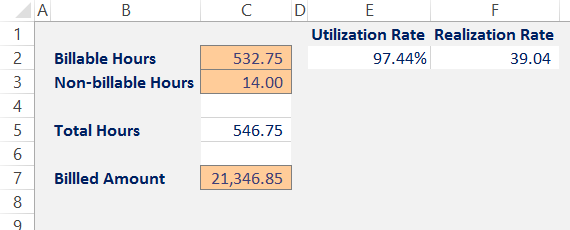Many of us are tasked with planning the year in the month of January. A good starting point for this is to look at how we performed last year. We want to get a sense about, if not a very specific look at how productive our employees are. In other words we want to manage employee productivity with intelligence. Where does that intelligence come from? If I have an application which has captured my employees’ hours as well as what we’ve billed out on their behalf along with some other basic information then I can manage employee productivity with intelligence.
With BillQuick I can see at a glance what their Utilization rate and Realization Rate is.
The utilization rate refers to how much out of their total available hours was spent on actual billable work. The realization rate refers to how much of those available hours have been realized in terms of actual dollars (total billed).
The formulas are simple:
Billable Hours / Total Hours = Utilization Rate
Billed Amount / Total Hours = Realization Rate
 Figure 1- 1 Utilization and Realization Rate Calculations
Figure 1- 1 Utilization and Realization Rate Calculations
Looking at data like this can help us see at a glance where we are making good use of our resources and where there may be an opportunity to increase productivity without having to increase our burden. In other words if an employee’s productivity is low based on a low utilization and realization rate, it means we can look at ways to increase that employee’s billable hours (and make sure they get billed). Assuming the employee is salaried, then our cost doesn’t change, but profitability will. Maybe we had that employee working on internal projects last year.
This is what we mean when we talk about managing employee productivity with intelligence. Identifying these opportunities can make all the difference in profitability without going to much effort. Having the right accounting software in place will give you the intelligence you need. The kind of intelligence that has you managing employee productivity with intelligence so you can work smarter and not harder.